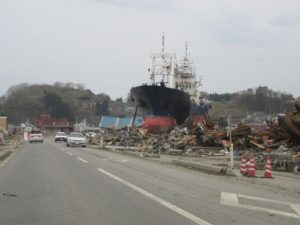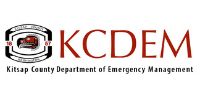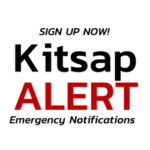
KCDEM is in the process of developing a Catastrophic Event Playbook to help residents of local neighborhoods and communities know what they can do to help immediately after a major disaster. The most likely scenario is an earthquake and tsunami triggered by either the Cascadia Subduction Zone or the Seattle Fault.
A catastrophic magnitude 9 earthquake hit the northeast coast of Japan on March 11, 2011. The quake and resulting tsunami killed more than 15,700 people and injured another 5,300. More than 4,600 went missing. The events destroyed or damaged buildings, roads, hospitals, schools, bridges and several reactors at a nuclear power plant.
Electricity, gas and water supplies, telecommunications, and railway service were disrupted. Economic losses were estimated at $309 billion. Japan is arguably the most prepared nation in the world for this type of event. For us, when Cascadia hits, it will be even worse:
Kitsap County needs to be better prepared for a devasting event. To help, KCDEM has developed a Catastrophic Event Playbook: Field Guide to use. Earthquakes are the most likely hazard to occur in Kitsap County. It’s likely that wherever you are when an earthquake hits, will be the area you’ll remain in, at least initially. Roads and bridges are predicted to break, leaving everyone stranded on an “island” separated from other parts of the County. Disaster planners call this a geographic “micro-island.” You won’t be able to drive between micro-islands. but, you could walk, bike, use another form of all terrain vehicle, or an alternate route such as by water to reach other places. Access to normal emergency services, power, water, and communication systems will be out for an extended period of time. This understand is central to the guidance provided in the Playbook
For each micro-island, KCDEM has identified one primary location where emergency volunteers will attempt to use Neighborhood Emergency Supplies and Tools (NEST) kits to help create a neighborhood gathering site. NEST kits are basic packages of items to establish:
- Command and Communication Station
- Shelter Station
- First-aid Station
- Water, Sanitation and Hygiene Station
- Neighbor Check Station
Within each kit will be the all-weather version of the Field Guide and job task sheets for each station. There are not enough supplies to take care of many people, so individual preparedness is still key. However, the Field Guide offers a start, is easily duplicated, and lends a sense of order to chaos. If you know which micro-island you’re in, you’ll be better prepared to help others once your family and immediate neighbors are safe.
Learn more about efforts to help the residents of Kitsap County during a catastrophic event.

